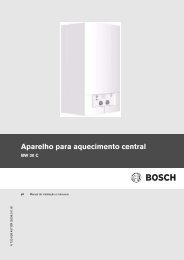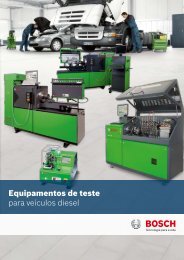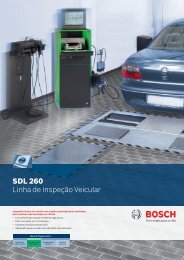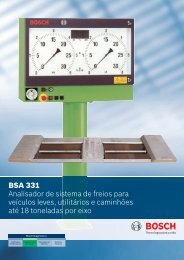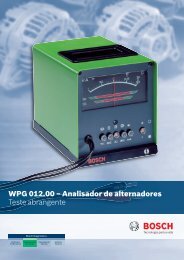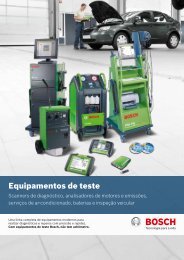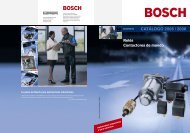Bosch Automotive A product history
Bosch Automotive A product history - Bosch worldwide
Bosch Automotive A product history - Bosch worldwide
- No tags were found...
Create successful ePaper yourself
Turn your PDF publications into a flip-book with our unique Google optimized e-Paper software.
40 | Supplement 2 | Journal of <strong>Bosch</strong> History<br />
Advertising brochure for<br />
the Gutbrod Superior<br />
(1952). The first car to<br />
feature <strong>Bosch</strong> gasoline<br />
injection was 20 percent<br />
more economical than<br />
its carburetor version.<br />
Gasoline injection’s opportunity finally<br />
arrived with the demands of aviation. The<br />
commonly used carburetors were in danger<br />
of icing up at altitude, of overflowing during<br />
banking, and even of catching fire in unfavorable<br />
circumstances. Gasoline injection,<br />
by contrast, ensured greater reliability, as<br />
well as more power. Correspondingly, it<br />
became increasingly established from the<br />
mid-1930s on. The first trials with BMW and<br />
Daimler-Benz engines took place in 1932,<br />
and the first 8-, 9-, and 12-cylinder pumps<br />
went into series <strong>product</strong>ion from 1937.<br />
gasoline injection offered. The designrelated<br />
scavenging losses of as much as<br />
20 percent of the fuel had long been an<br />
annoying defect in standard two-stroke<br />
engines. With its precise fuel metering, the<br />
<strong>Bosch</strong> gasoline direct injection system for<br />
cars – presented in a two-stroke Gutbrod<br />
Superior 600 at the 1951 Frankfurt Auto<br />
Show – used up to 20 percent less gasoline<br />
and increased the output of the vehicle<br />
from 22 to 27 horsepower. In the same year,<br />
Goliath equipped its GP 700 with this<br />
system.<br />
Start of series <strong>product</strong>ion for cars<br />
After the second world war, the Allied<br />
authorities in Germany banned any further<br />
development of such systems for aircraft<br />
engines. It was for this reason that developers<br />
now took a second look at gasoline<br />
injection for passenger cars, and this time<br />
their efforts were successful. While the<br />
quest for reliability and power had driven<br />
its development in aircraft engine design,<br />
in the case of cars <strong>Bosch</strong> engineers were<br />
above all motivated by the economies<br />
<strong>Bosch</strong>, however, was focusing increasingly<br />
on solutions for the four-stroke engines that<br />
were to become dominant. From the 1950s<br />
on, this engine design, which is standard<br />
today, began to oust the simple two-stroke<br />
engine. Engine performance was the main<br />
selling point of the gull-winged Mercedes-<br />
Benz 300 SL, the first series-produced<br />
four-stroke vehicle with gasoline injection.<br />
An indirect injection system for large-series<br />
six-cylinder engines from Mercedes-Benz<br />
was launched as an alternative to expensive



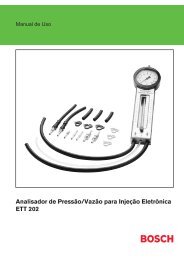

![Guia de instalação do ESI[tronic] Startcenter - Bosch](https://img.yumpu.com/53542449/1/190x135/guia-de-instalaaao-do-esitronic-startcenter-bosch.jpg?quality=85)
